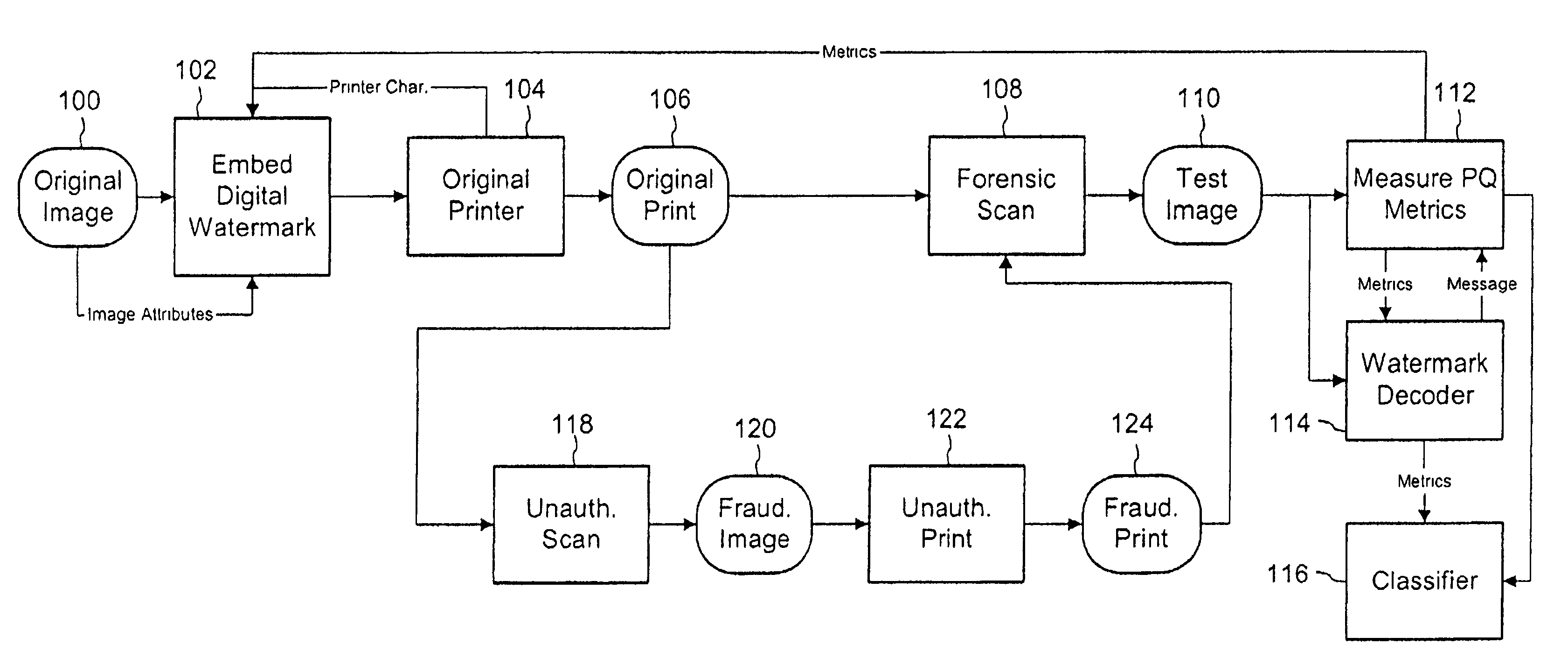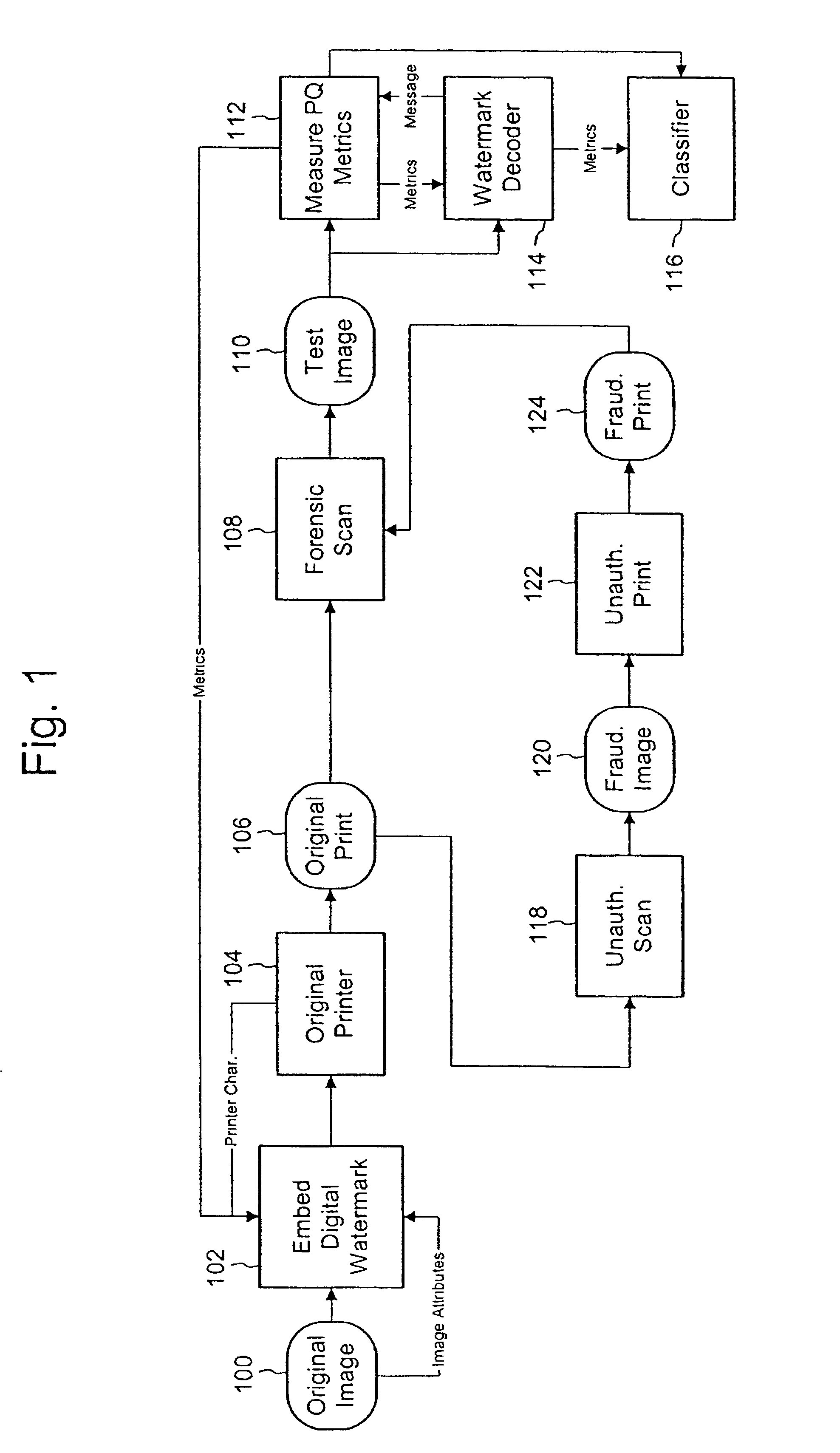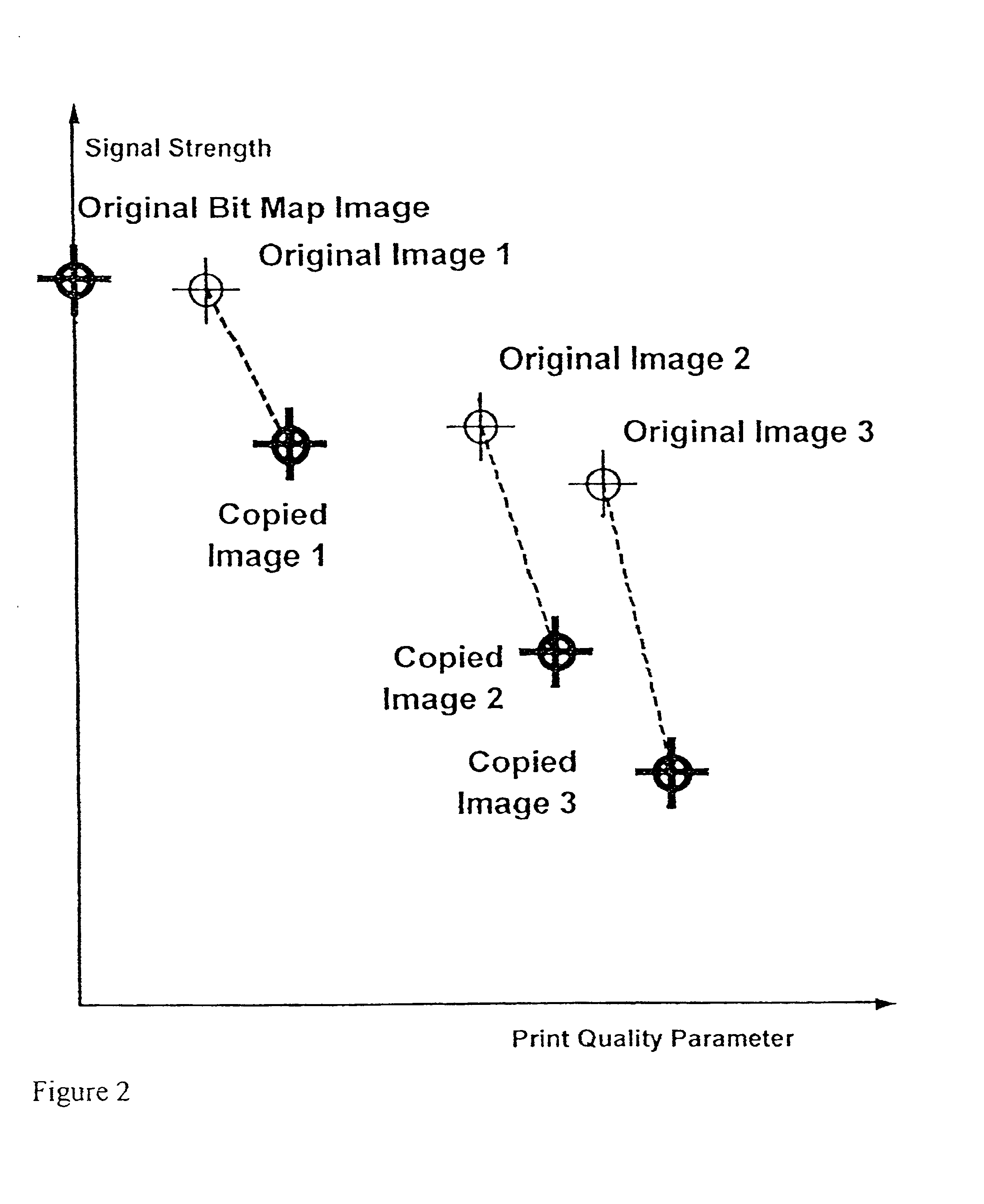Authenticating printed objects using digital watermarks associated with multidimensional quality metrics
a multi-dimensional quality and authentication technology, applied in image data processing, instruments, computing, etc., can solve the problems of counterfeiting of printed materials, inability to authenticate certain types of printed documents, and inability to meet the needs of printing materials, etc., to achieve high quality, low cost, and counterfeiting effect of printed materials
- Summary
- Abstract
- Description
- Claims
- Application Information
AI Technical Summary
Benefits of technology
Problems solved by technology
Method used
Image
Examples
examples of application
[0105]FIG. 2 shows a plot of the watermark signal strength of original and copied images against a print quality parameter for 3 original images and 3 copies on different papers, which, for illustration purpose could be the print growth described above. Based on the watermark signal strength alone, it is sometimes difficult to decide on the status of a printed image. Copied image 1 has a higher signal strength than original image 3. Similar observations can be made with respect to the print quality parameters of the original and copied images. In this example, it is not possible without further knowledge to set a single threshold value for the watermark signal strength that will accurately detect copies. Only with the experience provided by multiple and repeated measures on various papers and printers can we determine a threshold for each class of printers / scanners or copiers.
[0106]FIG. 3 exhibits the same plot of the watermark signal strength of original and copied images against a...
PUM
 Login to View More
Login to View More Abstract
Description
Claims
Application Information
 Login to View More
Login to View More - R&D
- Intellectual Property
- Life Sciences
- Materials
- Tech Scout
- Unparalleled Data Quality
- Higher Quality Content
- 60% Fewer Hallucinations
Browse by: Latest US Patents, China's latest patents, Technical Efficacy Thesaurus, Application Domain, Technology Topic, Popular Technical Reports.
© 2025 PatSnap. All rights reserved.Legal|Privacy policy|Modern Slavery Act Transparency Statement|Sitemap|About US| Contact US: help@patsnap.com



